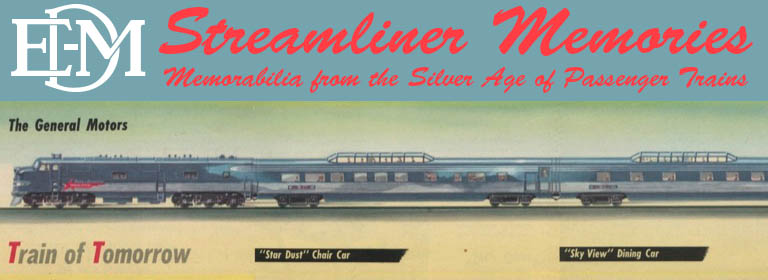Based on this timetable, a better name for Kansas City Southern might have been Shreveport Northern. Table 1 shows three trains a day between Shreveport and Kansas City. Table 2 shows two trains a day between Shreveport and New Orleans. Table 4 shows a train, the Flying Crow, between Shreveport and Port Arthur, Texas, while table 4 shows the Shreveporter from Shreveport to Hope, Arkansas.
 Click image to download a 5.2-MB PDF of this timetable contributed by Ellery Goode.
Click image to download a 5.2-MB PDF of this timetable contributed by Ellery Goode.
As of 1938, Kansas City Southern consisted of a line from Kansas City through Shreveport to Port Arthur, Louisiana, on the Gulf Coast. In 1939, it merged with the Louisiana and Arkansas Railway, which had lines from Shreveport to New Orleans and Hope. This enabled the railroads to start a Kansas City-New Orleans passenger train called the Southern Belle.
The timetable is a little deceptive, as two of the three trains from Kansas City to Shreveport, including the Southern Belle, actually went on to New Orleans. The timetable misleadingly gave the impression that passenger would have to change trains in Shreveport, which isn’t very sound advertising.
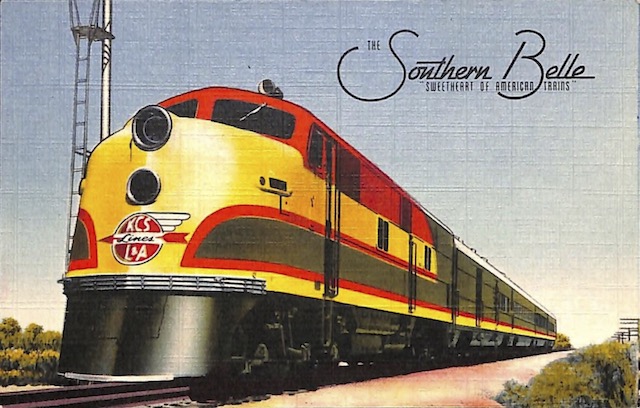 Click image to download a 168-KB PDF of this postcard.
Click image to download a 168-KB PDF of this postcard.
The Southern Belle was inaugurated on September 2, 1940, with Pullman-built lightweight coaches and diner-observation car and heavyweight sleeping cars rebuilt to match the lightweights. To haul the train, KCS bought two E3 and two E6 locomotives (the differences between the two models were minor).
After the war, the diner-observation cars were remodeled into lounge-observation cars, the sleepers remodeled once again, and the rest of the train replaced with aluminum-bodied coaches and a diner made by American Car & Foundry. The remodeled train went into operation on April 3, 1949.
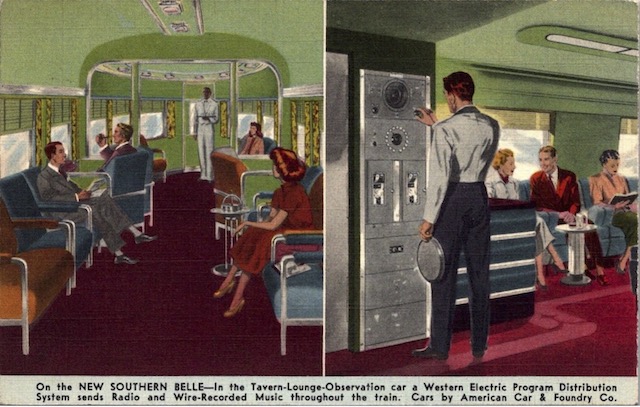 Click image to download a 199-KB PDF of this postcard.
Click image to download a 199-KB PDF of this postcard.
The rebuilt lounge-observation cars featured radio and wire recordings that could be played on the entire train. Although the postcard below says “Cars by American Car & Foundry,” this particular car was built by Pullman.
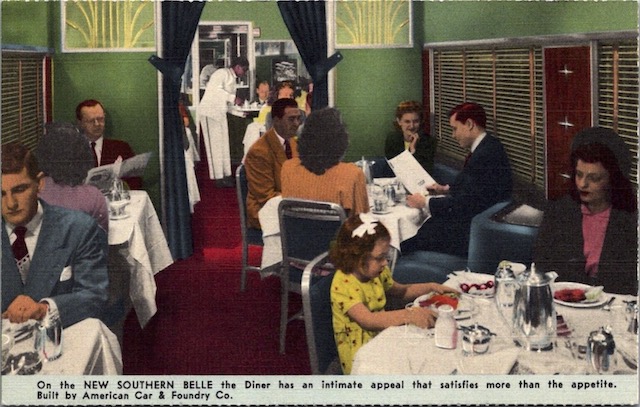 Click image to download a 199-KB PDF of this postcard.
Click image to download a 199-KB PDF of this postcard.
The tops and bottoms of these colorized postcards have perforations, suggesting that they were distributed as a single packet. The mention of American Car & Foundry hints that they were a free promotional item rather than sold to passengers.
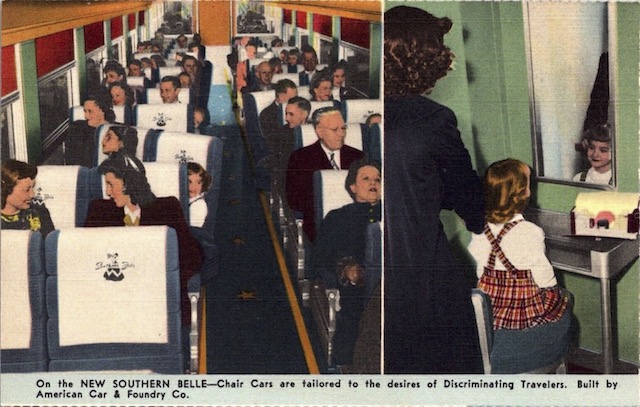 Click image to download a 194-KB PDF of this postcard.
Click image to download a 194-KB PDF of this postcard.
The coaches had comfortable seats with antimacassars featuring the Southern Belle logo — a woman wearing a hoop skirt or dress that (perhaps coincidentally) made her look like a bell.
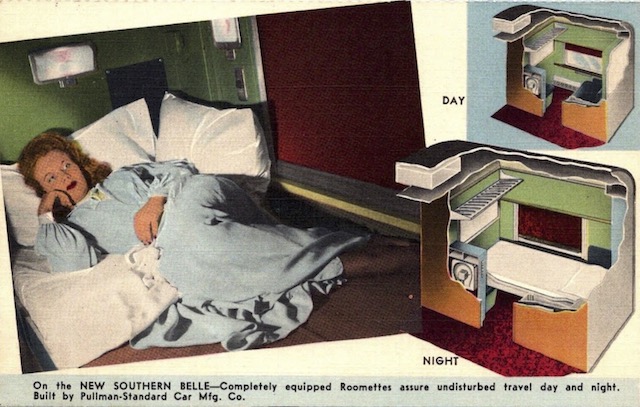 Click image to download a 176-KB PDF of this postcard.
Click image to download a 176-KB PDF of this postcard.
The sleeping cars must have been rebuilt by Pullman as they featured roomettes, which wouldn’t have been included in the original heavyweight cars. Many postwar sleeping cars were “10 and 6s,” meaning they had ten roomettes and six bedrooms. The Southern Belle cars were 14-and-4s, with four roomettes in place of two of the bedrooms in a 10-and-6.
